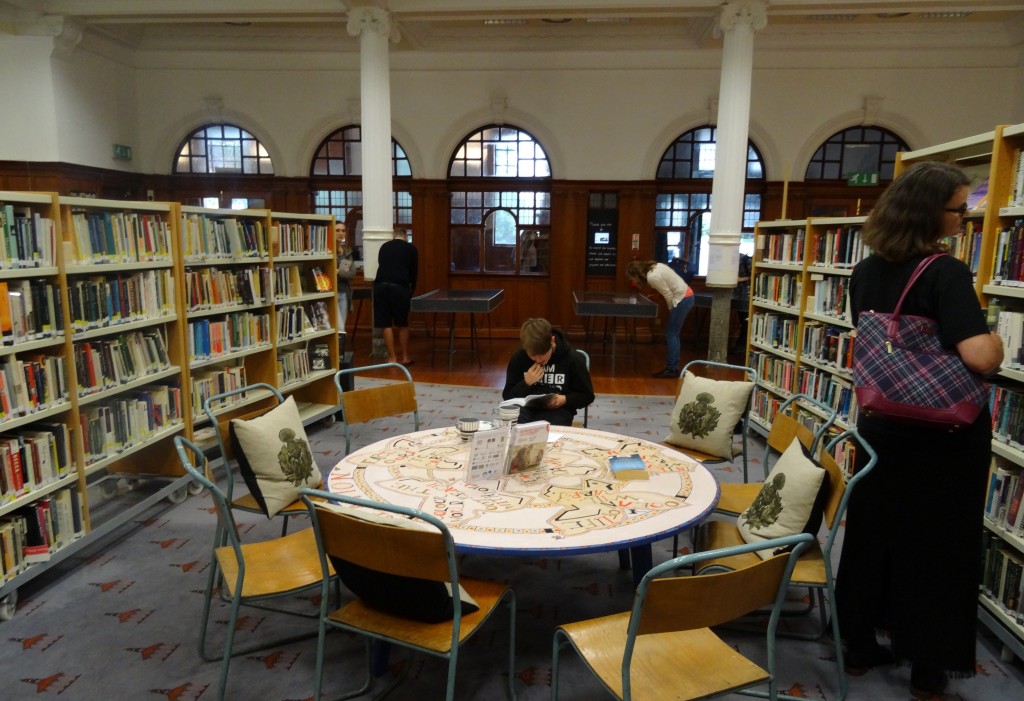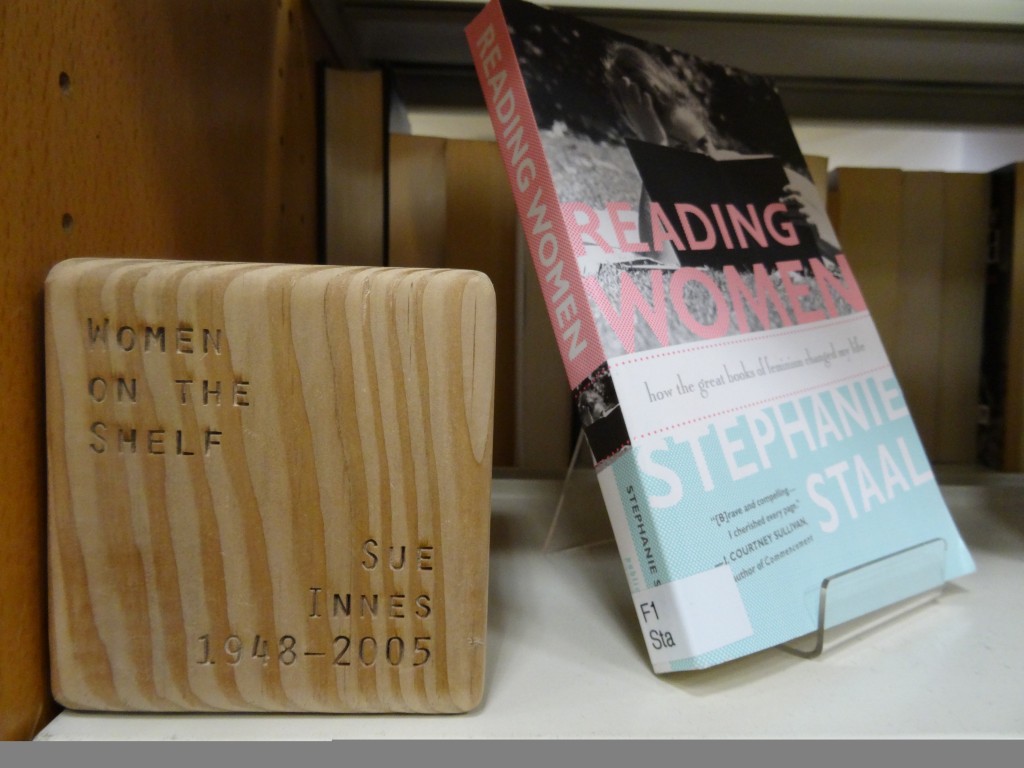Women and the Scottish past and present – how do we properly pay homage and why?
 Rachael Purse and Karen Mailley-Watt are the duo that make up the History Girls, they observe the place of women in Scotland’s history and why and how we should pay respect.
Rachael Purse and Karen Mailley-Watt are the duo that make up the History Girls, they observe the place of women in Scotland’s history and why and how we should pay respect.
There are only three statues of women in Glasgow. Queen Victoria on horseback in George Square, Lady Isabella Elder in Elder Park, and La Pasionara on the banks of the Clyde.
At first this seems like a physical reminder that we are terrible at celebrating women and their achievements publicly, but really, aren’t statues a tad old fashioned?
The reason Glasgow’s public parks and squares are teeming with bronzes of severe moustachioed gents, is because they were all cast in the mid to late 19th century, an era obsessed with public commemoration. This period saw the creation of the highly commercially successful Necropolis, which ensured immortality in stone for Glasgow’s wealthy. The necropolis and our bronze gentlemen were born out of the same urgent need to publicly and permanently celebrate the achievements of men connected with the city. The motivation for this is rather simple, fear.
As today’s feminists would say, these statues are really just proof of the Victorian male’s fragile masculinity. So whilst it is wonderful to see that new statues of women like the iron-willed Mary Barbour are being commissioned, do we really need to copy the Victorian establishment, do we need to create more statues of women, or can we not think of something a little more 2016?
“Nicola Sturgeon is proof that a Scottish woman can achieve greatness on the international political stage.”
Many influential Scottish women are lost in the cultural ether, being over-shadowed by, or having their work attributed to men. We are all familiar with the work of the MacDonald sisters, Frances and Margaret, Margaret would of course go on to marry Charles Rennie Mackintosh, but what about other great Scottish female creatives like sculptor and illustrator Evelyn Beale (1870-1944), decorative art and interior designer, Phoebe Anna Traquair (1852-1936) and Paisley War Memorial designer and sculptor, Gertrude Alice Meredith Williams (1877-1934).
There are also women involved in science and industry such as pioneering car engineer Dorothee Aurelie (1894-1986), who developed the Galloway Car and who made huge strides for women working within in the engineering sector. Dorothee was refused membership to the Institution of Automobile Engineers in 1914 on the outrageous grounds that the ‘word person means a man and not a woman’. Like many other women during this time, World War One gave Dorothee the chance to prove herself in this male dominated field and was eventually awarded an MBE for her work during the war.
New research into the life and works of these women is essential if we are to ensure their rightful place within the rich tapestry of Scotland’s history. Without them, Scotland’s story will never be fully understood. And how can we expect this to happen when gender history is barely touched upon in our National Curriculum? How many Scottish women do children actually learn about in school?
We need to highlight the achievements of Scottish women, and we should start by introducing the next generation to the scientists, designers, social reformers, and the radicals and law breakers who have shaped our nation. By ensuring that these women are made an integral part of the curriculum, we keep their memories alive, commemorating and celebrating them.
“Many influential Scottish women are lost in the cultural ether, being over-shadowed by, or having their work attributed to men.”
As well as commemorating women through the education system, we need to celebrate them in public spaces, in new and innovative ways. The Mapping Memorials to Women in Scotland Project (www.womenofscotland.org.uk), has harnessed the power of online mapping to create a community database of memorials.
Seeing the map of Scotland fill up with blue pins, each one representative of a woman remembered, is an excellent way of sharing information, and ensuring that even the most obscure commemoration is not forgotten. Anyone can sign up and contribute to the mapping project, making this project collaborative as well as engaging.
The Glasgow Women’s Library (GWL), whose tagline is ‘Celebrating Scottish Women’, have also been paying homage to the female sex in their publicly accessible library. The Women on the Shelf Initiative allows sponsors to dedicate a bookplate, or shelf to the heroine of your choice, whose name and tribute will then be either placed on sculptural wooden cubes on the library shelf, or within a book itself as a permanent bookplate.
“As well as commemorating women through the education system, we need to celebrate them in public spaces, in new and innovative ways.”
This innovative way to memorialise women, within the unique public environment of the GWL, is also an excellent way of ensuring the future of this organisation by securing funding through sponsorships, a much better idea in comparison to casting and erecting an expensive bronze statue which will also incur maintenance costs. Library shelves just need a wee dusting.
Looking to the future, when Scotland may have the opportunity to shape its own future, we should be heartened that the nation does have such a strong leader; whether you love her or hate her, Nicola Sturgeon is proof that a Scottish woman can achieve greatness on the international political stage. Now’s the time to celebrate strong Scottish characters, both male and female, and showcase our nation to the world. It is vital that we pay homage to the women who are inspiring us now, instead of waiting to re-write the history books once more.
Rachael Purse has an MA (hons) in History and an MSc in Museum Studies, both from the University of Glasgow. In May 2016 she was lucky enough to be successful in her application for The Glasgow School of Art ‘Bringing Back the Mack’ PhD Scholarship, funded by the GSA and Historic Environment Scotland. She will be recording and providing critical reflection on the restoration process, as well as the changing use of space within the building and contemporary conservation practices and ethics. It is a real privilege to be able to contribute to this vast project in real-time, working alongside such a skilled multi-disciplinary team.
She originally studied for my undergrad in History, with a focus on the Medieval and Early Modern, at the University of Glasgow, and went on to attain my Museum Studies Masters the following year where she specialised in dress history and textile conservation. She has worked for Glasgow City Heritage Trust for two years prior to becoming a PhD candidate, and had various roles within this small organization, which enabled me to learn a great deal about the built environment, conservation, and even conference organisation and event management.
Karen Mailley-Watt has an MA Joint (Hons) and an MLitt in Decorative Arts & Design History from the University of Glasgow. Karen has worked with various organisations including The National Museum of Rural Life and Glasgow Print Studio.
Her PhD Research is collated in a project called Glasgow Girls Revisited, an interdisciplinary project that encompasses archival research to consider the broad communities of production of industrial design in Glasgow over the period 1864-1930, and investigate the place of women in these businesses as both designers and makers (and in some instances owners and managers).


